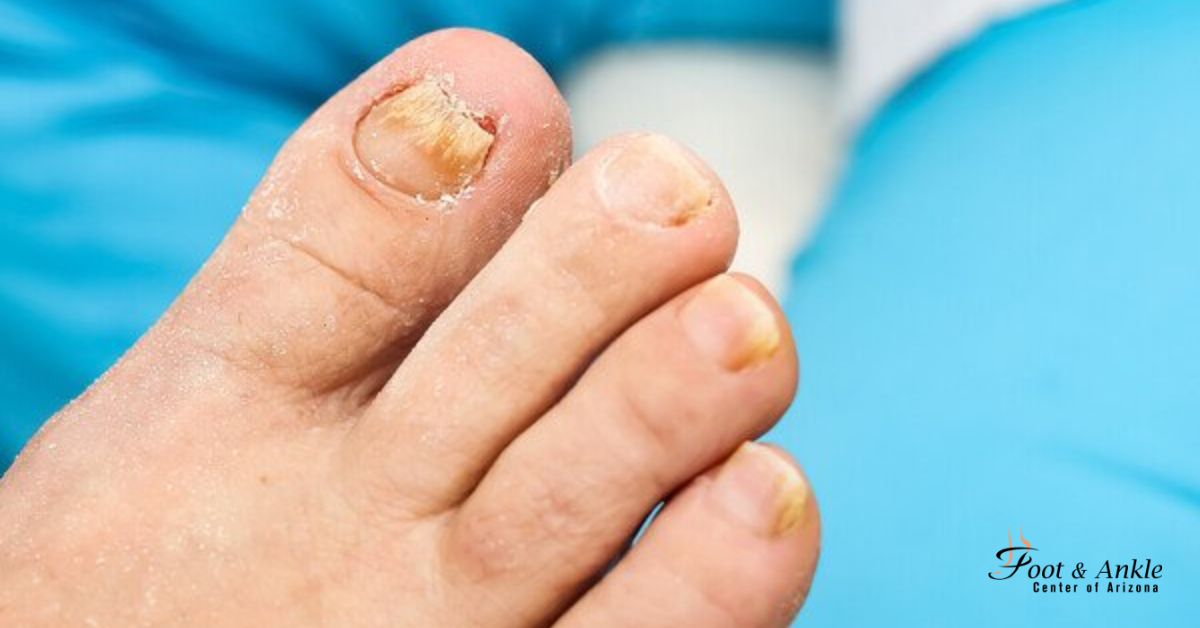Toenail fungus, medically known as onychomycosis, is a common condition that affects many people worldwide. It’s characterized by a yellowish discoloration of the toenail, thickening, and sometimes crumbling at the edges. While it might seem like a minor issue, toenail fungus can lead to discomfort and even pain if left untreated. In this article, we are able to explore what causes toenail fungus, a way to save it, and the diverse remedy options available. What Causes Toenail Fungus?
Toenail fungus is on the whole caused by dermatophytes, a form of fungi that flourishes in warm, wet environments. However, different types of fungi, such as yeasts and molds, can also cause infections. Here are the primary factors contributing to the improvement of toenail fungus:
1. Warm, Moist Environments
Fungi that cause toenail infections thrive in environments that are warm and moist. This is why toenail fungus is often found in individuals who frequently wear closed-toe shoes, which can create a warm and damp environment around the feet. Public locations like swimming pools, locker rooms, and communal showers are also common breeding grounds for those fungi.
2. Poor Foot Hygiene
Neglecting proper foot hygiene can significantly increase the risk of developing toenail fungus. This includes not washing feet regularly, not drying them thoroughly after washing and wearing the same socks or shoes for extended periods without allowing them to dry completely.
3. Trauma to the Nail
Injuries to the toenail or the skin around the nail can provide an entry point for fungi. Even minor injuries, such as stubbing your toe or trimming your nails too closely, can increase the risk of infection.
4. Weakened Immune System
Individuals with weakened immune structures are extra vulnerable to fungal infections, which include toenail fungus. This consists of human beings with situations that includes diabetes, HIV/AIDS, and people undergoing remedies like chemotherapy that weaken the immune system.
5. Age
As we age, our nails can become more brittle and dry, creating more opportunities for fungi to invade. Additionally, reduced blood circulation and slower nail growth in older adults can make it easier for infections to take hold and harder to treat.
6. Athlete’s Foot
An athlete’s foot is a commonplace fungal contamination that affects the pores and skin of the foot, mainly between the feet. If left untreated, the fungus can unfold to the toenails, main to toenail contamination.
7. Genetics
Some people may be genetically predisposed to developing toenail fungus. You may be at a higher risk if you have a family history of toenail fungus or other fungal infections.
Symptoms of Toenail Fungus
Recognizing the symptoms of toenail fungus early can help in seeking prompt treatment and preventing the infection from spreading. Common symptoms include:
- Discoloration: The nail may turn yellow, brown, or white.
- Thickening: The nail may become thicker than usual.
- Crumbling: The edges of the nail may crumble or become ragged.
- Distortion: The shape of the nail may become distorted.
- Odor: An unpleasant smell may emanate from the infected nail.
- Separation: The nail may start to separate from the nail bed.
Prevention of Toenail Fungus
Preventing toenail fungus involves maintaining good foot hygiene and taking steps to avoid environments where fungi thrive. Here are some practical tips:
1. Keep Feet Clean and Dry
Wash your feet daily with soap and water, and make sure to dry them thoroughly, especially between the toes. Moisture left on the skin can create an ideal environment for fungi to grow.
2. Wear Breathable Footwear
Opt for shoes made of breathable materials like leather or mesh, which allow air to circulate around your feet. Avoid wearing the same pair of shoes two days in a row; instead, give them time to air out and dry completely.
3. Change Socks Regularly
Wear clean, dry socks every day and alternate them if they end up damp from sweat or water. Consider socks made of moisture-wicking substances, which can assist in keeping your feet dry.
4. Use Antifungal Products
Use antifungal sprays or powders in your shoes and in your feet, especially in case you common public places like gyms, swimming pools, or locker rooms. These products can help save you from fungal infections by means of developing an inhospitable environment for fungi.
5. Avoid Going Barefoot in Public Areas
Wear flip-flops or shower shoes in communal areas such as public showers, locker rooms, and around swimming pools to reduce the risk of coming into contact with fungi.
6. Trim Nails Properly
Keep your toenails trimmed short and straight across. This can help prevent injuries and reduce the spaces where fungi can hide and grow.
7. Disinfect Nail Tools
Always use clean, disinfected tools for trimming nails. If you visit a nail salon, ensure they follow proper sterilization procedures to avoid the risk of infection.
Treatment Options for Toenail Fungus
Treating toenail fungus can be challenging and may require a combination of approaches. Here are some common treatment options:
1. Topical Antifungal Medications
Topical remedies, along with antifungal lotions, ointments, and nail lacquers, may be implemented at once on the affected nail. These remedies are normally more effective for mild to slight infections. However, they’ll now not penetrate the nail deeply sufficient to take away the fungus absolutely.
2. Oral Antifungal Medications
Oral antifungal drugs, such as terbinafine (Lamisil) and itraconazole (Sporanox), are often prescribed for more severe infections. These medications can help clear the infection more effectively by reaching the fungus through the bloodstream. Treatment duration can vary, but it typically lasts for several weeks to a few months.
3. Laser Treatment
Laser therapy is an emerging remedy choice that includes using a laser to goal and smash the fungus without negative the encompassing tissue. This treatment is still being studied for its effectiveness, and it could require a couple of periods.
4. Surgical Removal
In severe cases where the infection does not respond to other treatments, surgical removal of the infected nail may be necessary. The nail can be removed partially or completely, and in some cases, a new healthy nail will grow back.
5. Home Remedies
Some individuals opt for home remedies to treat toenail fungus, such as tea tree oil, vinegar soaks, and Vicks VapoRub. While some of these remedies have anecdotal support, their effectiveness is not well-documented in scientific literature. It’s vital to visit a healthcare company earlier than counting on domestic treatments, especially for excessive infections.
The Role of the Foot and Ankle Center of Arizona
At the Foot and Ankle Center of Arizona, we understand the challenges and frustrations associated with toenail fungus. Under the expert care of Dr. Kris A. DiNucci, DPM, FACFAS, we offer comprehensive diagnosis and treatment plans tailored to each patient’s needs. Our approach includes:
- Thorough Evaluation: We conduct a detailed examination to determine the extent of the infection and identify the specific type of fungus involved.
- Personalized Treatment Plans: Based on the assessment, we increase a custom-designed remedy plan which can consist of a combination of topical or oral medicines, laser therapy, and preventive measures to lessen the danger of recurrence.
- Patient Education: We believe in empowering our patients with knowledge. We provide guidance on proper foot hygiene, nail care, and lifestyle adjustments to prevent future fungal infections.
- Ongoing Support: Managing toenail fungus may be a long-time period process. We offer ongoing support and follow-up care to reveal progress and adjust remedy plans as needed.
Conclusion
Toenail fungus is a commonplace however manageable situation. Understanding what causes toenail fungus and taking proactive steps to maintain good foot hygiene can drastically reduce your hazard of developing this infection. If you do experience signs and symptoms of toenail fungus, look for prompt treatment from a qualified healthcare company, like Dr. Kris A. DiNucci at the Foot and Ankle Center of Arizona, who can assist repair the health and look of your nails. With the right care and prevention strategies, you may maintain your feet healthful and free from fungal infections.


